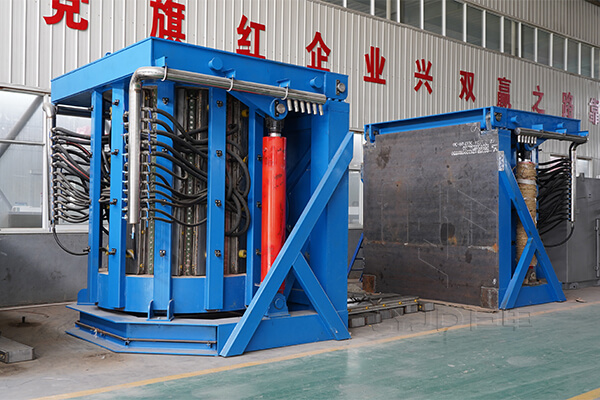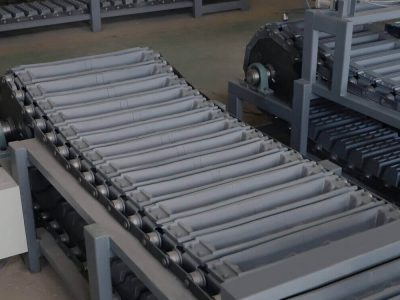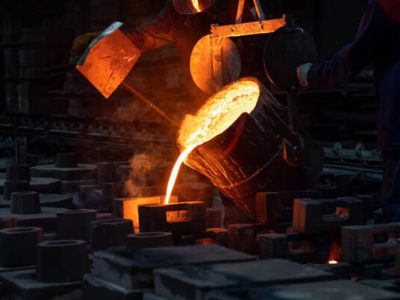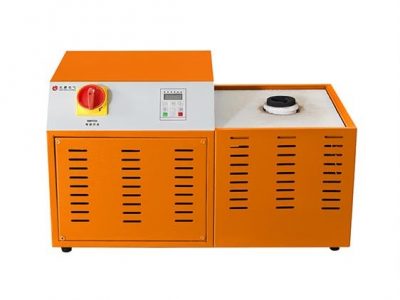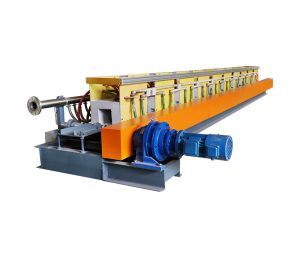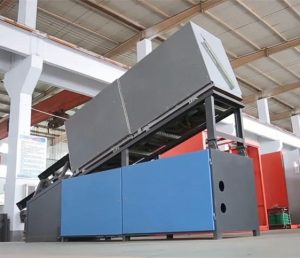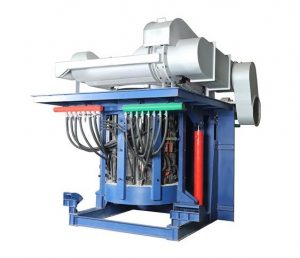With the development of the market economy, the scrap steel recycling industry has become a very promising industry. Typically, the recycling and smelting of scrap steel produces larger amounts of recycled waste. However, steel scrap melting induction furnaces can reduce secondary waste during scrap recycling and melting. So, how does it do this?
Operation of Steel Scrap Melting Induction Furnace
To understand how a scrap melting induction furnace can reduce secondary waste when recycling and melting scrap, we need to know how it operates.
A steel scrap melting induction furnace is a steelmaking equipment that uses an induction electric heating effect to heat and melt metal. Its operation process mainly includes the following steps:
Adding materials: Add the scrap steel raw materials that need to be melted into the furnace to prepare for heating and melting.
Melting: The scrap steel is heated to the melting temperature through the induction electric heating effect to melt it into molten steel. During this process, the temperature and atmosphere in the furnace need to be effectively controlled to ensure smooth melting.
Slagging: To remove impurities and harmful elements in the molten steel, it is necessary to add an appropriate amount of slagging materials, such as limestone, fluorite, etc., into the furnace to form protective slag to protect the molten steel.
Slag removal, deoxidation, and tapping: After melting and slag-making are completed, the formed slag needs to be separated from the molten steel. This process is called slag removal. Next, to reduce the oxygen content in the molten steel, deoxidation treatment is required and a deoxidizer is added to the furnace. Finally, the treated molten steel is poured out of the furnace to form qualified steel ingots or billets.
When operating a steel scrap melting induction furnace, attention needs to be paid to safe operation and environmental protection. The operating status of the equipment should be checked regularly to ensure its safety and reliability; at the same time, effective environmental protection measures should be taken to reduce the emission of pollutants such as waste gas, wastewater, and noise, and to protect the environment and ecology.
Ways To Reduce Waste and Promote Recycling
Steel scrap melting induction furnaces can reduce waste and promote recycling through the following steps:
Optimize raw material selection: Prioritize high-quality scrap raw materials, which often contain fewer impurities and can improve melting efficiency and product quality. At the same time, avoid using waste materials that contain harmful substances or cause pollution to the environment.
Improve smelting efficiency: Improve the smelting efficiency of scrap steel by improving the smelting process and technology, thereby reducing the waste of energy and materials in the smelting process. For example, advanced melting technology and equipment are used to optimize melting temperature and time, reduce energy consumption, and reduce smoke and dust emissions.
Waste reuse: Reuse waste generated during the smelting process to reduce the burden on the environment. For example, the waste generated can be recycled or processed into other useful products.
Establish a recycling system: Establish a complete recycling system to encourage people to reuse scrap steel and other metal scraps at recycling stations or factories. Through a reasonable recycling system, scrap steel can be effectively collected and reused, reducing the exploitation of natural resources and the impact of waste on the environment.
Summarize
The profit margins of scrap steel recycling are large, and the market demand is very stable. Through reasonable management and operation, the scrap steel recycling industry can bring considerable benefits to enterprises. In the future, the scrap steel recycling industry will continue to play its role in environmental protection, resource recycling, and steel industry development, and make greater contributions to economic and social development.
























